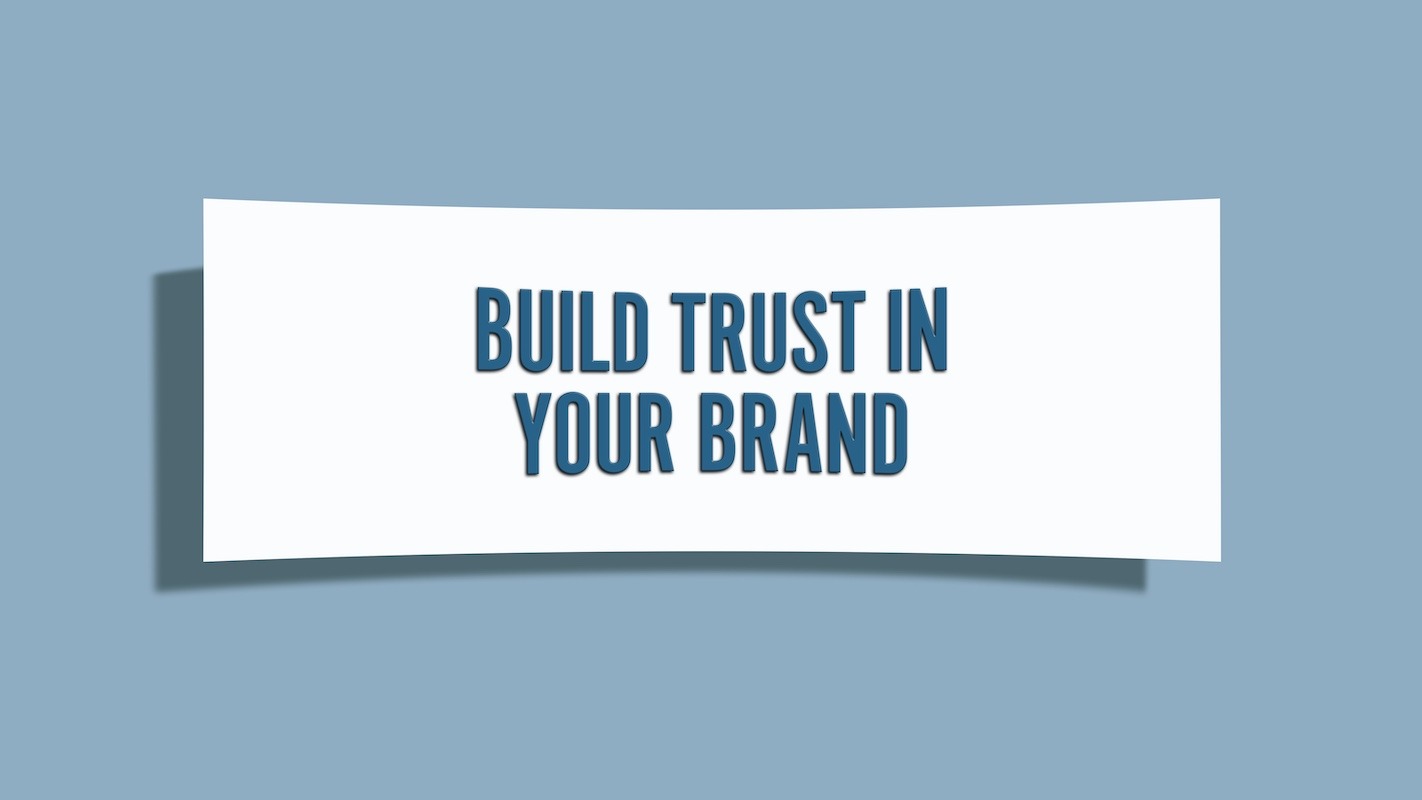

Why Financial Advisors Market Credibility and Trust on Their Websites
The financial advisor digital marketing space and the Internet are more competitive than ever. Smaller firms often face an uphill battle against larger firms with established brand names and bigger marketing budgets. Despite this, there are critical areas where smaller firms can stand out versus their bigger competitors. Their strategy is based on how they build and communicate their online credibility and trust on personalized websites.
Get the right financial advisor marketing strategy! Connect with Paladin Digital Marketing today!
For investors researching financial advisors, trust is everything. After all, their money and future financial security are at stake. Pick the right advisor, and they will have more money. Pick the wrong advisor, and they will have less money, which can undermine their future financial security and retirement lifestyles.
A financial advisor’s website is often the investors’ first impression, and first impressions can determine whether visitors leave or stay long enough to learn more about a firm.
This article explores how independent financial advisors can build trust and credibility on their websites by using transparency to level the competitive playing field and positioning themselves as the better choice, regardless of the size of their marketing budgets.
Why Credibility and Trust Matter for Financial Advisors
Trust is the cornerstone of any financial advisor relationship. Investors must believe advisors have the skills, experience, and integrity to manage their financial futures.
Some investors may also assume bigger firms are “safer” due to their name recognition and perceived stability when a smaller advisory firm’s website lacks trust signals or differentiating characteristics.
Key reasons why credibility and trust matter include:
Overcoming Skepticism: Many investors are cautious and selective when researching advisors. They are the deer in the proverbial headlights and a lack of transparency creates increased doubt that undermines trust - that’s when they exit websites, never to return.
First Impressions Definitely do Matter: Your website is your digital storefront; it must instill trust in the first few seconds after investors land on your financial advisor home page. This should be considered a one-time marketing opportunity: Snooze and you lose.
Level the Playing Field: Smaller firms certainly can’t outspend their larger competitors, but they can outshine them in trust, clarity, and client focus.
Transparency Is the Cornerstone of Credibility and Trust
Transparency is more than just a financial industry buzzword—it’s a major strategic advantage. In the digital age, investors expect clear, honest, and upfront communication on financial advisors’ websites.
Why does transparency work?
- It reduces investor uncertainty and skepticism.
- It communicates confidence—advisors who openly share information demonstrate they have nothing to hide.
- It sets you apart: Smaller firms can be more transparent and personal than larger, bureaucratic firms that rely on brand awareness.
7 Actionable Ways Advisors Can Use Transparency to Build Trust
Independent advisors who act as fiduciaries have a competitive edge.
Most advisors make their fiduciary duties clear on their websites. Where they miss an opportunity is describing how this registration benefits investors.
- They must avoid potential conflicts of interest.
- Investor interests must come first.
- Their method of compensation is a fee.
Why it matters: Investors value advisors who put their interests first.
- Add a statement about your independence and fiduciary status prominently on your homepage and About page.
- Use straightforward language like: “As financial fiduciaries, we must always act in our client’s best interests.”
- Give some thought to how you describe the differences between fee-only and fee-based.
- Fiduciary advisors are held to a higher ethical standard.
Be Crystal Clear About Compensation
Many financial advisors are reluctant to discuss their compensation on websites, particularly if there are layers of fees or two types of commission (investment, insurance). This can be very confusing for investors who put a lot of value on this type of disclosure.
However, transparency around fees also builds trust and reduces uncertainty. Many investors are wary of hidden costs and potential conflicts of interest, particularly if they have had bad experiences with previous advisors.
Why it matters:
- 75% of investors are likelier to engage an advisor who documents their compensation (types, amounts).
- They may equate commissions to aggressive sales tactics in the past.
How to execute:
- Add a dedicated Fee Structure page or section to your website.
- If applicable, separate fees from other forms of compensation.
- Use simple visuals (charts or tables) to break down fee-only, fee-based, or commission models.
- Example of text: We charge a straightforward, percentage-based fee for the assets we manage. There are no hidden fees or surprises.
Provide Detailed Advisor Bios
Investors want to know who they’re trusting with their money. A well-crafted bio builds familiarity and trust.
Why it matters
- Investors connect better with people versus firms.
How to execute:
- Include professional photos and relevant credentials on websites
- Years of relevant experience
- Degrees, in particular, advanced degrees
- Certifications: CFP®, CFA, CPA, etc.).
- Share a short, personal story
- Why did you become an advisor?
- What do you like about helping clients with their money?
- Personal: Married, children, church
- How do you give back to your community
- Enhance bios with video introductions for a more personal touch.
Display Client-Centric Processes
Demystify your financial process by outlining what clients can expect when selecting you as their financial advisor.
Why it matters:
- Investors appreciate clarity and consistency.
How to execute:
- Use visuals (flowcharts or step-by-step timelines) to show your process: Initial consultation → financial plan → Investing
- Ongoing reviews.
- Example: Here’s how we work together:
- Step 1: Get to know you and your goals.
- Step 2: Create a custom financial plan
- Step 3: Invest your assets
- Step 4: Refine your plan as necessary
- Step 5: Make adjustments
Offer Real, Valuable Client Resources
Content is a powerful tool for building credibility. Share insights that show you’re an expert who can solve clients’ financial challenges.
Why it matters:
- Educational content positions you as a trusted authority.
- The more content, the better
- Be a consistent source of new content
How to execute:
- Publish blogs, guides, or videos answering common investor questions.
- Add tools like retirement calculators, financial checklists, or FAQs.
- Example: "Download our free guide: 5 Steps to Retire With Confidence."
Include Social Proof and Client Testimonials (Compliance Approval)
Investors look for proof that you’ve delivered results for others. Social proof builds confidence.
Why it matters:
- People trust other people’s experiences.
How to execute:
- Include client testimonials, Google reviews, or case studies.
- Highlight third-party recognitions: awards, CFP Board verification, or media mentions.
- If regulations limit testimonials, focus on case studies or anonymized success stories.
- Make sure the recognition is approved in advance by compliance.
Be Accessible and Encourage Safe Contact
A clear, approachable Call-To-Action (CTA) reduces barriers for investors.
Why matters:
- Uncertainty prevents action.
- Clear next steps invite easy, safe connections.
- Consider adding a free offer.
How to execute:
- Use trust-building CTAs: Schedule a Free Consultation—No Strings Attached
- Add multiple connections: phone, email, live chat, or calendar integrations (like a Calendly).
- Include a personal invitation: "We’re here to answer your questions—reach out anytime."
The Competitive Advantage for Smaller Firms
Smaller firms can compete with—and even outperform—bigger firms by building off of:
- Personalization: Smaller firms offer a tailored, personal experience that large firms can’t match.
- Transparency: A clear, open approach builds trust faster than relying on a brand name.
- Niche Expertise: Smaller firms can specialize in specific investor needs (e.g., doctors, pre-retirees, small business owners) to stand out.
Why it matters:
- While big firms rely on reputation, smaller firms can improve credibility and trust through increased transparency and exceptional service.
How to execute:
- Make sure investors understand the benefits that your organization brings to the relationship.
- Add a custodian page to your website (in particular, a brand name).
- Describe how you research investments.
- Consider adding a dictionary under Resources (unique feature)
Real-Life Examples of Transparency in Action
An independent RIA with a clear "How We’re Paid" page reduced client skepticism and increased consultation requests.
A small firm specializing in retirees used step-by-step process visuals to clarify their planning approach, boosting engagement.
Results show that transparent, client-focused websites build credibility and convert more visitors into clients.
Competing on Trust, Not Just Resources
Personalization, specialization, credibility, and trust are the best ways to compete with larger firms—and transparency is the foundation of this sales funnel.
Smaller firms can build trust that outshines even the biggest competitors by showcasing their independence, willingness to practice disclosure, specialized expertise, and client-centric approach.
Ready to stand out? Start by updating your marketing strategy and improving your website’s transparency so investors feel more comfortable contacting you.

Jack Waymire, BA, MBA
Search Here
Categories
- AI (18)
- blogging (2)
- branding (1)
- content (12)
- custodians (1)
- Digital (345)
- email marketing (3)
- fcmo (2)
- fees (1)
- financial advisor marketing (62)
- Google (3)
- Ideas & Tips (78)
- Investor Experience (7)
- lead generation (7)
- linkedin (1)
- Marketing (371)
- newsletters (1)
- Online Transparency (2)
- search engine optimization (3)
- seo (9)
- Social Media (2)
- video (2)
- Websites (108)
- YouTube channel (2)
Recent Posts
-

-

How Financial Advisor Blogging Generates Thought Leadership and Leads
November 24, 2025 -

Top 5 Ways Digital Marketing Benefits Financial Advisors Seeking Leads
November 20, 2025 -

Trust Is The Biggest Online Marketing Challenge For Financial Advisors
November 17, 2025 -

Compliant Financial Advisor Bios Using AI Website Builders
October 22, 2025

